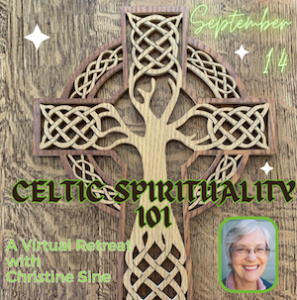by Emily Huff
My husband, daughter, and I had an incredible opportunity to spend time with the Taizé
community for a week this summer catching the rhythm of that wonderful community. For those
who don’t know about it, Taizé is an ecumenical Christian monastic community in southern
France. The community has around one hundred brothers, from both Catholic and Protestant
backgrounds, who come from about thirty countries around the world.
We so enjoyed the beauty of that place, the beauty of the people we met, and the beauty of the
space that Taizé helped us carve out for God.
Three times a day, everything stops in Taize, and everyone gathers for prayer through singing, a
Scripture reading in several languages, a long period of silence, and more singing. The songs
which are sung in many different languages are short refrains repeated multiple times. This
allows for everyone to learn the music, and it also allows for the words to wash over everyone
and sink deeper into everyone’s hearts.
During the silence (which only lasts 8-10 minutes), this time catches some people by surprise
because it is so different from services in many other parts of the world that don’t have this
contemplative space worked into the worship time. Some wonder what they are supposed to be
doing and wonder when it will be over as it can seem to go on forever. Is it supposed to be a
time of praying for a specific thing, a time of gratitude, a time of praising God, or a time of
confession? Or are people just supposed to sit mindfully and be quiet?
When I asked one of the brothers if they ever give much guidance for people during the silence,
he explained that they don’t want to dictate what happens during this time because there is not
a formula for prayer. They simply provide scaffolding with prayer services three times a day and
set aside time for everyone for silence to create space to meet God and to go deeper into His
love. They have candles and icons and music that are all gateways to enter God’s presence.
Brother Emile shared with me that he explained this part of the service to children by simply
saying that “God has something to say to you” so we make space to listen.
As a task-oriented person who has been conditioned to be productive with so much of my time,
this was a challenge for me at first to simply be quiet. But after a few days of being at the
services, I noticed my monkey brain stopped jumping around as much and God’s peace came
to settle me down. The silence allowed space for God to show up, and I began to trust the Spirit
to lead me through the time rather than me showing up with my agenda and lists to get through.
Mike Neelley shares that when we first begin to practice being quiet, it’s normal for us to be
distracted at first. His encouragement is that we can acknowledge the distraction and return to
the stillness time and time again. “We are training ourselves to return from our wanderings in
the far country of our thoughts back to the embrace of the Father” (Hearing the Heartbeat of
God, page 101).
Jason Santos points out in his book A Community Called Taize that the silence of Taizé acts
much like the sermon would in a traditional church service. It can be a time to meditate on the
Scripture that has just been read during the service and to listen to the still small voice of God
speaking to our hearts. It can be a time to pause and be still and simply focus on breathing. It
can be a time of praying for whatever comes to mind.
Jason Santos reflects that the brothers “have no expectations for what actually goes on during
the silence. At the core of it, the brothers hope that pilgrims experience freedom to encounter
God or the Scripture in their own ways. Brother Roger (the founding brother of Taizé) never said
to the brothers or the young people, ‘This is what you ought to be doing during the silence.’
What he did say was ultimately more suggestive than prescriptive. For example, one brother
recalled Brother Roger remarking, “There are moments when silence is everything in prayer.’
Apparently, Brother Roger was also heard quoting St. Augustine: ‘When our lips are closed and
our soul is open before God, our heart speaks to God.’ For Brother Roger, our hearts have their
own language that surfaces only when we are silent. Without a doubt, the silence is at the heart
of the prayers of Taizé.” (A Community Called Taizé, p. 118).
Carve out some silence today and begin with the breath prayer that Mike Neelley invites us to
use in his book Hearing the Heartbeat of God:
“Father, take me deeper into your love.”
Breathe in: Father
Breathe out: Take me deeper in your love.
You can read more about the silence of Taizé here: https://www.taize.fr/en_article12.html
As you make space for God today, may you go deeper into His love.
 Celtic Spirituality 101
Celtic Spirituality 101
September 14, 9:30 – 12:30 (Pacific Daylight Time) will include a basic exploration of Celtic spirituality, prayers, learning about some of the Celtic saints, and reflections on how to bring the sacred into our daily lives. This introduction by Christine Sine to Celtic spirituality, a theological tradition that stems back to the 4th century will be presented as a virtual retreat.

